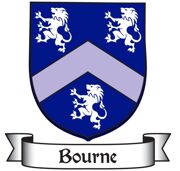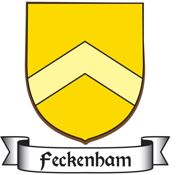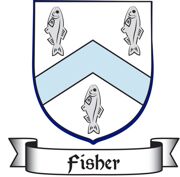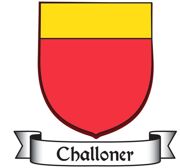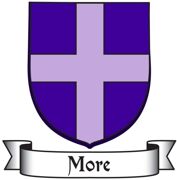- Home
- About Us
- School History
School History
Finchley Catholic Grammar School for Boys was founded in 1926 by Father Clement ‘Pop’ Parsons, the Parish Priest of St Albans Church in North Finchley.
He remained as Headmaster until his retirement in 1962, later becoming Monsignor Canon Parsons. Lessons for the first 18 students took place in the presbytery of St Albans; it was at this point that the school motto, “Da nobis recta sapere”, and the school colours of azure and gold, were established.
It was not until 1929 that the school moved to its current location in the grounds of Woodside Grange. The school was officially opened in June 1927 by Cardinal Bourne and the move to the current site took place in 1928 after intense negotiations with the seller of the White House and grounds. Finally, possession was finalised on 6th December of that year and on 8th December, the Feast of the Immaculate Conception, was declared our Foundation Day. By 1930, the number of students had risen to 108, including the first Sixth Form, and House teams were introduced: Vaughan, Wiseman, Newman and Bourne.
The first block of three classrooms was built during 1931-32, opposite the White House, largely through the generosity of Cardinal Bourne after whom it was named. A further four classrooms were added in 1934, together with the picturesque tower which faces the White House.
The school grew rapidly and by the outbreak of war in 1939, it held 270 students. The school tragically lost 29 former students and one former teacher during the war and its aftermath. Their memory is honoured through the enduring legacy of our "Finchley Fallen" film, which continues to be screened for our students to this day, just before they observe a the two-minute silence on Remembrance Day.
Canon Parsons continued to expand Finchley Grammar School for those who had passed their 11+ exams but also opened two further schools on the site - St Alban's Preparatory School and Challoner School which offered more technical courses. On Foundation Day 1956 the chapel which now serves as the school hall was opened by Cardinal Griffin for use by the three schools.
In 1971, the schools amalgamated and transitioned into a comprehensive educational institution, adopting the name "Finchley Catholic High School." During this transformative period, our gymnasiums and the Fisher building were constructed. In 2002, a significant milestone was achieved when the school attained specialist status as a Business and Enterprise College. Subsequently, in 2007, the Sixth Form began enrolling female students for the first time, marking another pivotal moment in our history.
Throughout the years, the school has continually evolved, witnessing various enhancements including the development of the Technology Block, the establishment of the Bampfield Performing Arts Centre, and most recently, the addition of the Canon Parsons Sixth Form Centre.
FCHS is looking forward to its 100th anniversary in 2026 with more than 1,200 students now on roll and remains one of the oldest schools in the Finchley area.
1872 – The White House was built which is now a Grade II listed building. Today, it houses the school reception, main offices, the oratory, student services and a medical centre.
1926 – Finchley Catholic Grammar School for Boys was founded by Father Clement ‘Pop’ Parsons, the Parish Priest of St. Alban’s Church in North Finchley.
1927 – The school was officially opened by Cardinal Bourne.
1929 – The school moved to its current location in the grounds of Woodside Grange.
1930 – The number of students had risen to 108. The first Sixth Form cohort was introduced.
1931-32 – The first block of three classrooms was built (opposite the White House).
1934 – A further four classrooms were built.
1936 – The Bourne Block was completed. This is the school’s largest building and houses most of the classrooms, the gymnasium, and the staff room.
1939 – By the outbreak of WWII, the school held 270 students.
1954 – The Challoner Block was completed which contains the second largest number of classrooms.
1956 – The school hall, which was originally used as a chapel, was built.
1971 – The schools amalgamated and transitioned into a comprehensive educational institution, adopting the name "Finchley Catholic High School."
2002 – The school attained specialist status as a Business and Enterprise College.
2004 – The Performing Arts Centre was opened which includes three music rooms and a drama studio.
2007 – The Sixth Form began enrolling female students for the first time.
2014 – The Canon Parsons Sixth Form Centre opened.
2020 – The school transitioned to remote learning in response to the Covid-19 pandemic. Government requirements then necessitated a phased "bubble" return to face-to-face learning, ensuring the safety and well-being of our students and staff during these challenging times.
2023 – A new kitchen in the Fisher building was installed and a significant investment was made installing interactive panels in classrooms.
2023 – The school's progress 8 score for the 2022-23 academic year means that nationally, Finchley Catholic High School is ranked 28th out of 6951 schools, placing it in the top 0.4% of schools across the country.
Our House System is an integral part of our school's rich tradition and history.
Every year group is organised into forms named after our six Houses: Bampfield, Bourne, Challoner, Feckenham, Fisher, and More. Each House is distinguished by a unique colored tie.
Here are the origins and namesakes of our Houses:
|
| Bampfield The parish of Barnet was founded in 1849 and Fr. George Bampfield's work in providing a safe environment for young Catholics to practise their faith began in 1865. One of the four houses into which the school was originally divided in July 1932 is named for him. |
|
| Bourne Cardinal Bourne, born in 1861, became Archbishop of Westminster in 1903 and was created a Cardinal in 1911. He encouraged Pop Parsons in his foundation of the school from the outset and his financial donation in 1931 made possible the building of the first block of three classrooms. |
|
| Feckenham John Feckenham was the last Benedictine Abbot of Westminster. A militant Preacher, he spent 22 years in captivity, ten in the Tower of London. As Mary Tudor’s trusted counsellor, he was instrumental in procuring pardons for many individuals, including the future Queen Elizabeth I. |
|
| Fisher St John Fisher was Bishop of Rochester in Henry VIII's reign. Condemned to death in 1535 for his fidelity to the Holy See, Pope Paul III made him a Cardinal before his death. Henry is said to have responded: "Paul may send him the red hat, but I will see that he has no head on which to wear it." |
|
| Challoner Bishop Richard Challoner, vicar Apostolic of the London District, was almost 90 when a Protestant mob came hunting for him during the Gordon Riots of 1780. Despite his age, it was only reluctantly that he agreed to be evacuated to the Finchley home of Dr. Mawhood, a prominent local Catholic, where he spent his last days. |
|
| More St Thomas More's refusal to recognise Henry VIII's spiritual supremacy led to his execution on July 6th 1535. He was a friend of Erasmus, Colet and many other esteemed scholars of his day, and was famously commemorated in Robert Bolt's play 'A Man for all Seasons'. |
In 2006, when we had a particularly large intake of students, we divided them into seven forms. At that time, it was decided that the additional form would be named in honour of our patron saint – Alban (Orange tie). However, it's worth noting that this particular form has since been discontinued
These Houses and their namesakes contribute to the vibrant tapestry of our school's identity and foster a sense of camaraderie among our students.


